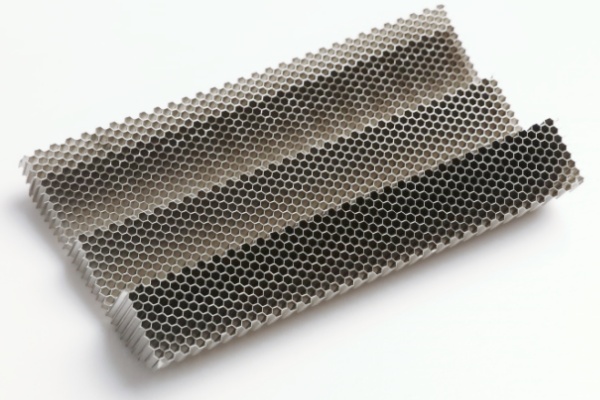To be a valuable global supplier
for metallic honeycombs and turbine parts
Release time:2025-09-29
Let me put it this way: a DOC metal substrate in a small car isn’t the same beast as the one in a big truck. They may look similar from the outside, but the way they’re built and tuned is pretty different.

Take light-duty cars first. The biggest headache here is cold starts. The substrate has to wake up fast, because most emissions come out in the first few minutes. That’s why the cells are finer and the walls thinner—it heats up quick and gets to work almost right away. But you can’t overdo it, or the back pressure will choke the engine. It’s a balancing act.
Now look at heavy-duty trucks or buses. They’re running long hours, heavy loads, and hot exhaust. Quick light-off isn’t the top priority anymore. What matters is toughness and long-term stability. So the DOC metal substrate here usually has thicker walls, stronger alloys, and a flow path that won’t crack under stress. The focus shifts from “wake up quick” to “keep going strong.”
Standards push them in different ways too. Passenger cars are judged heavily on startup emissions—CO and hydrocarbons right out of the gate. Heavy-duty vehicles, on the other hand, are tuned more for NO₂ balance and for setting up the downstream systems like the DPF and SCR. In fact, in most heavy-duty systems, the DOC metal substrate is working behind the scenes to make sure the next stage does its job properly.
So here’s the takeaway: light-duty DOCs are sprinters—they need to move fast. Heavy-duty DOCs are marathon runners—they need to last. Both are vital, but you can’t just swap one into the other and expect it to work.